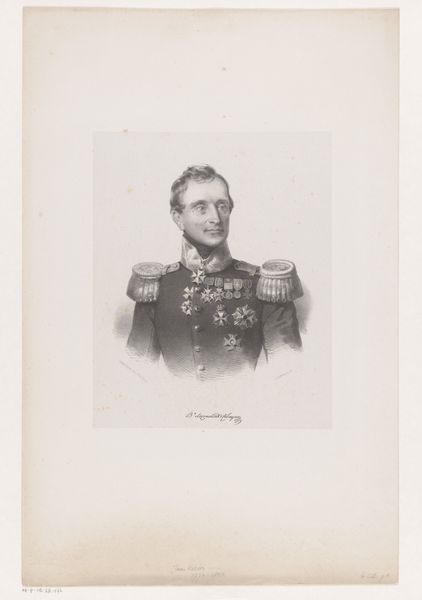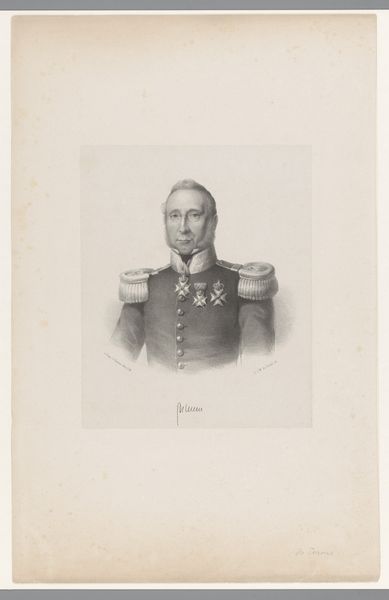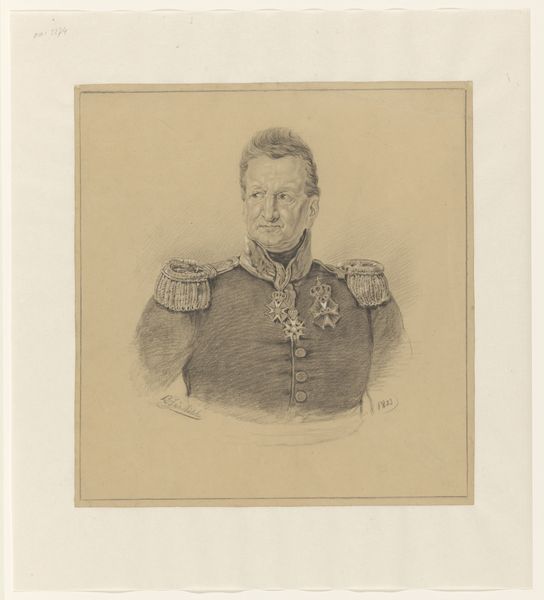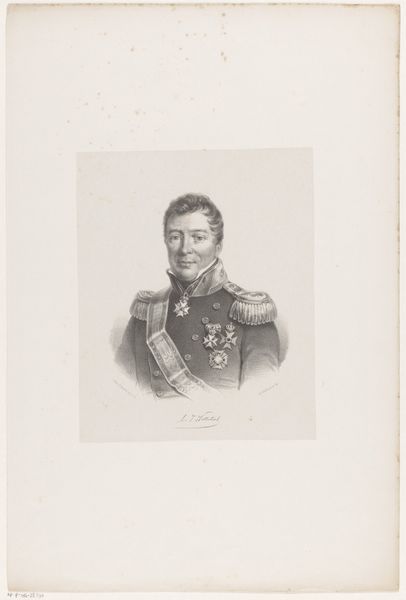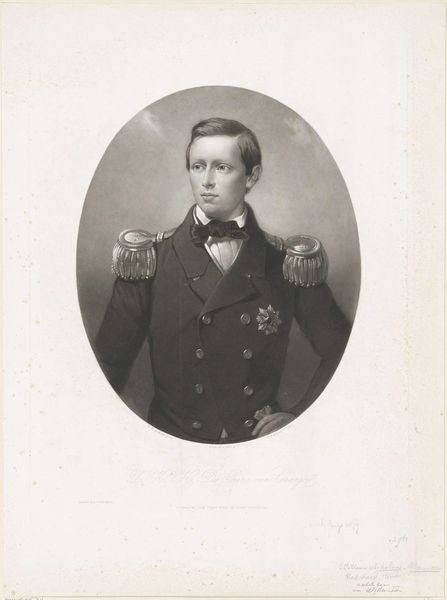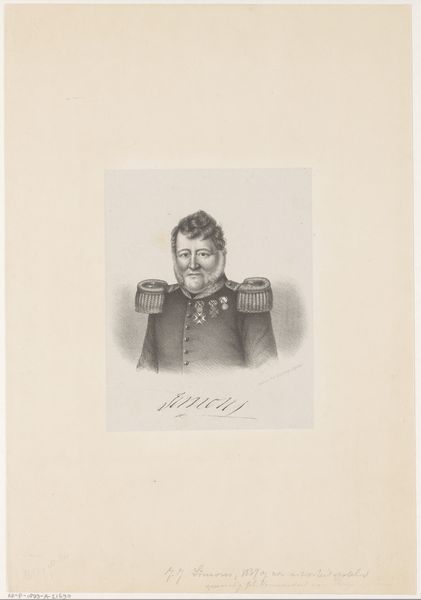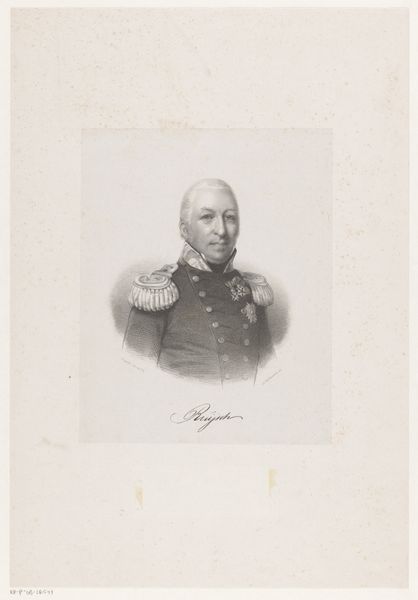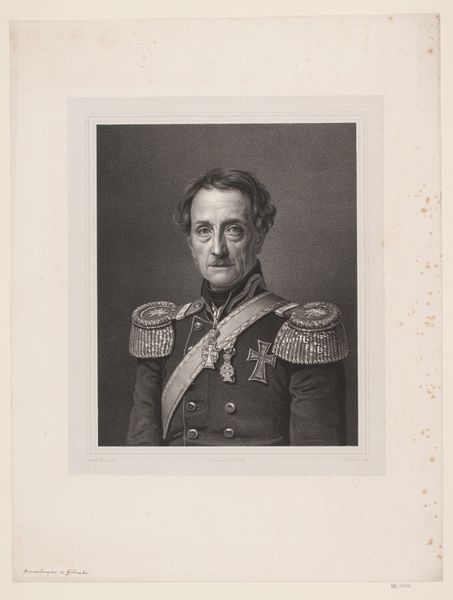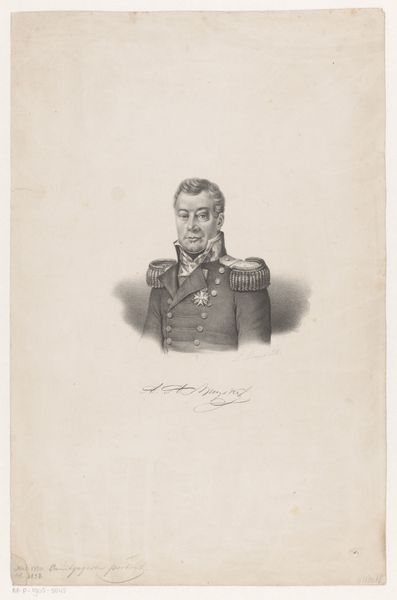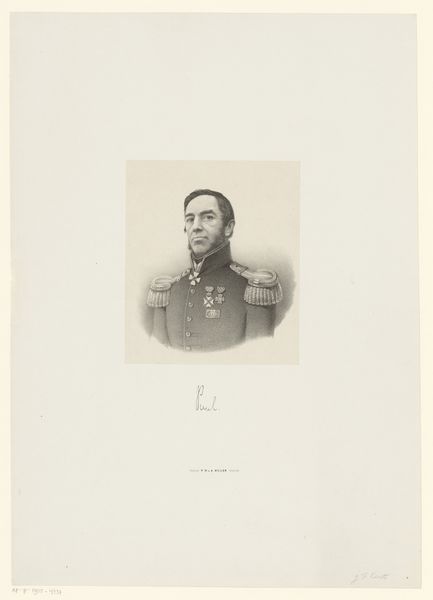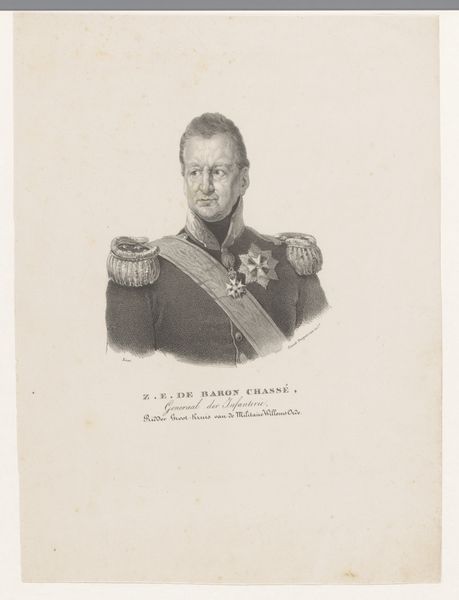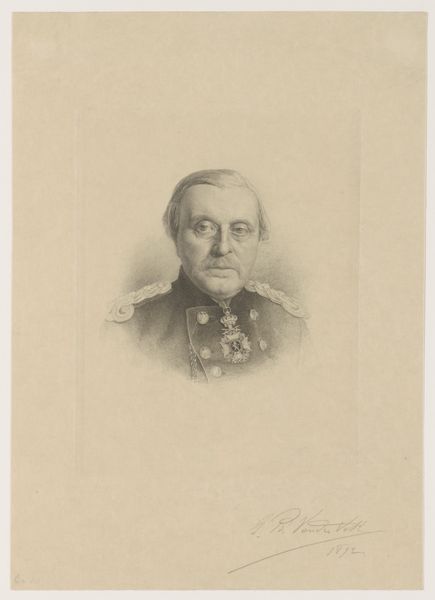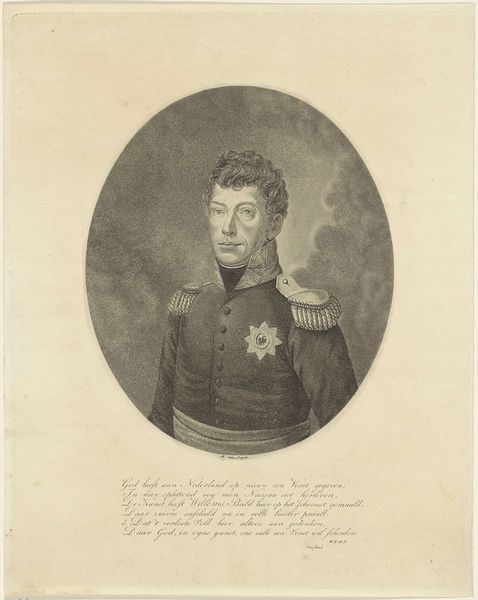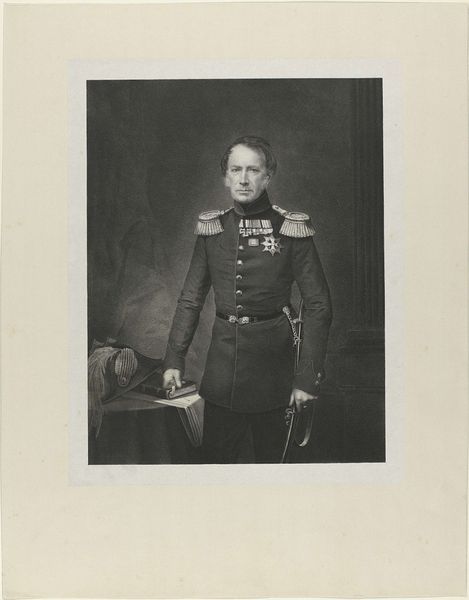
print, engraving
#
portrait
#
print photography
# print
#
historical photography
#
history-painting
#
academic-art
#
engraving
Dimensions: height 467 mm, width 323 mm
Copyright: Rijks Museum: Open Domain
Amédée Geille made this print of a man in uniform sometime in the first half of the 19th century. It's an image of a military man, and what’s interesting is how it fits into a longer history of portraiture. For centuries, portraits of the aristocracy and the wealthy had a clear function: to advertise their status and to justify their privilege. This image is an example of how those visual codes continued into the nineteenth century. Think of the symbols of power, the military uniform, the medals; even the frame suggests high status. This wasn’t just a likeness, it was a performance of authority. The print was made in a period of great political and social upheaval, as democratic revolutions challenged the old order. The artist lived through the July Revolution in France in 1830. In times like these, art became another way to contest ideas about power. We can research into the identity of the man in the portrait to better understand the role he played in the French military during the period.
Comments
No comments
Be the first to comment and join the conversation on the ultimate creative platform.
